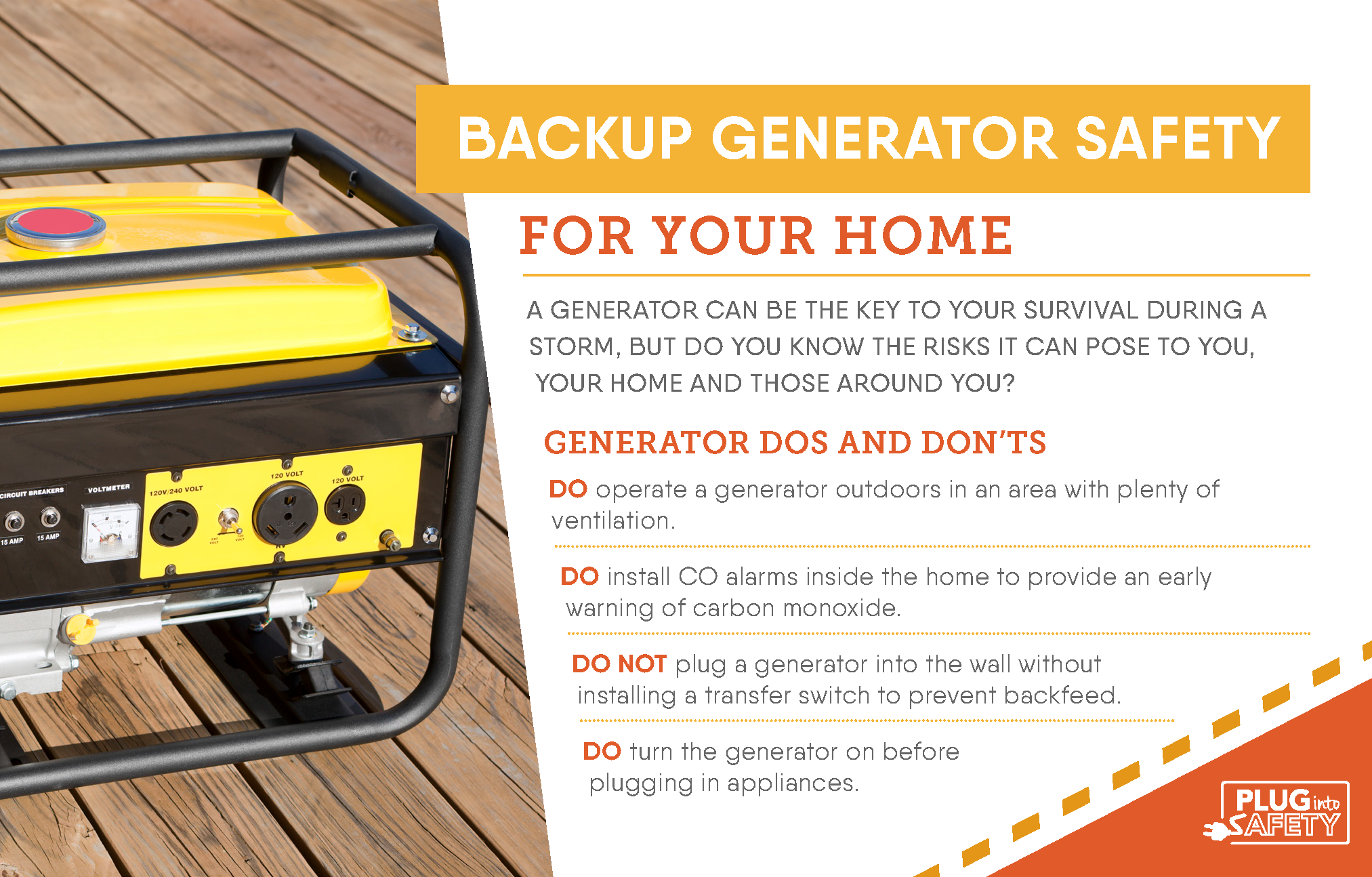Generators & Switches
A backup generator can be deadly if used improperly.

Never run a generator indoors – it produces deadly carbon monoxide.
Always follow your owner’s guide for proper operation, grounding, etc.
It’s okay to plug an appliance directly into the generator. But you should never connect the generator to your home’s wiring (such as at the main panel or through a dryer circuit). Rather, the law requires a generator transfer switch to prevent dangerous backfeed from your generator onto the power lines. Without the transfer switch, you are endangering our linemen and the public.
Safe, Simple, & Affordable Backup Power Connection
The GenerLink is a UL-listed, socket-mounted transfer switch that offers a safe, easy, and affordable way to connect your portable generator to your home during power outages; no rewiring, no hassle.
Quick & Easy Installation
GenerLink transfer switches are installed behind your electric meter and deliver generator power directly to your breaker box.
Order GenerLink directly from the manufacturer at Shop GenerLink Meter Mounted Transfer Switch or by calling 800-886-3837. Once you receive your GenerLink, Midwest Electric will install the GenerLink transfer switch at no cost to you (Midwest Electric members only).
Call Midwest Electric to learn more about GenerLink at 419-394-4110 or email info@midwestrec.com.
Click here for a detailed, easy-to-read brochure on how to properly size, select, install and use a generator.
Sizing your generator takes into account the total kilowatt (kW) requirements of the electrical equipment to be served. Undersizing can leave you frustrated, while over-sizing is just a waste of money. Pay particular attention to anything with an electric motor. Starting a motor requires three to seven times the current used during normal operation. Allowing for this startup or inrush of current when sizing the generator is crucial.
Electrical connections to the wiring system of the home, farm, or business require a double-throw transfer switch. This switch safely separates the power produced by the generator, from the utility’s lines. Without it, a lethal flow of electricity could reach utility workers down the line, who are restoring power. Installing a double-throw switch is not a do-it-yourself project! Involve an experienced electrical contractor to make sure the installation meets the utility’s requirements, and all local and national codes.
Another safety consideration is where the generator is placed. Unless you vent the generator fumes to the outside, never locate it inside a building, garage or basement. Otherwise, deadly carbon monoxide poisoning could occur.

